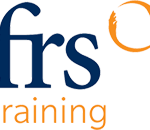Considering a Course in Site Surveying?
Surveying is essentially the science of taking big measurements; it is the process of analyzing and recording the characteristics of a land area and helping to design a plan or map for construction.
A Surveyor is the only professional who can divide the land into individual properties, create the boundaries and translate the information and the measurements of those properties into a legal description – which is what appears on the deed of transfer. Just about any civil engineering project starts with a survey to determine the legal boundaries between parcels of property, the location of existing infrastructure, and the topography and slopes of the land.
Surveying has been an element in the development of the human environment since the beginning of recorded history. The planning and execution of most forms of construction require it and it is also widely used in several other fields such as transport, communications, mapping, and the definition of legal boundaries for land ownership.
What is Site Surveying?
Site surveys inspect an area where construction or civil engineering work is proposed, to gather information for a design or an estimate to complete the initial tasks required for building. Surveying can determine the precise location and best orientation for the site and the location of access points and any complications.
Surveying or Site surveying is the profession and science of determining the terrestrial or three-dimensional position of points and the distances and angles between them. They provide data relevant to the shape and contour of the Earth’s surface for engineering, mapmaking, and construction projects. Surveyors update boundary lines and prepare sites for construction so that legal disputes are prevented. Surveyors make precise measurements to determine property boundaries.
Surveyors work with the basics of geometry, trigonometry, regression analysis, physics, engineering, metrology, programming languages, and law. They use equipment like total stations, robotic total stations, GPS receivers, retroreflectors, 3D scanners, radios, handheld tablets, digital levels, drones, GIS, and surveying software.
Site Surveying is an important tool for research in many other scientific disciplines and there are several types of surveying to consider. Geodetic surveying is when surveys are carried out on a large scale with the help of control networks spanning over long distances and Cadastral Surveying is carried out to define land ownership and boundaries. Topographical Surveying is carried out to determined land structure along with variation in land heights and As-Built Surveying is carried out after completion of a construction project to check for any variance from the proposed design. Photogrammetry is another type of surveying where surveys are carried out by taking photographs from elevated ground stations.
What Will I Learn about Site Surveying?
- You will learn about topographical surveying, boundary surveying, and the analysis of infrastructure.
- You will learn about legal principles, property law, town planning, and land rights.
- You will learn about the various applications and computing skills that Site Surveyors use such as GIS and CAD technology.
- You will learn about engineering, maths, applied maths and physics, and Geomatics.
Career Opportunities in Site Surveying
After completing your course in Site Surveying, you can expect to work as a Site Surveyor, Land Surveyor, Surveyor, Cartographer, and Civil Engineering technician in major industries such as construction, transportation, and communications.
If you’re serious about doing a course in Site Surveying and would like to learn more, check out courses in the Nightcourses.co.uk national course finder.






